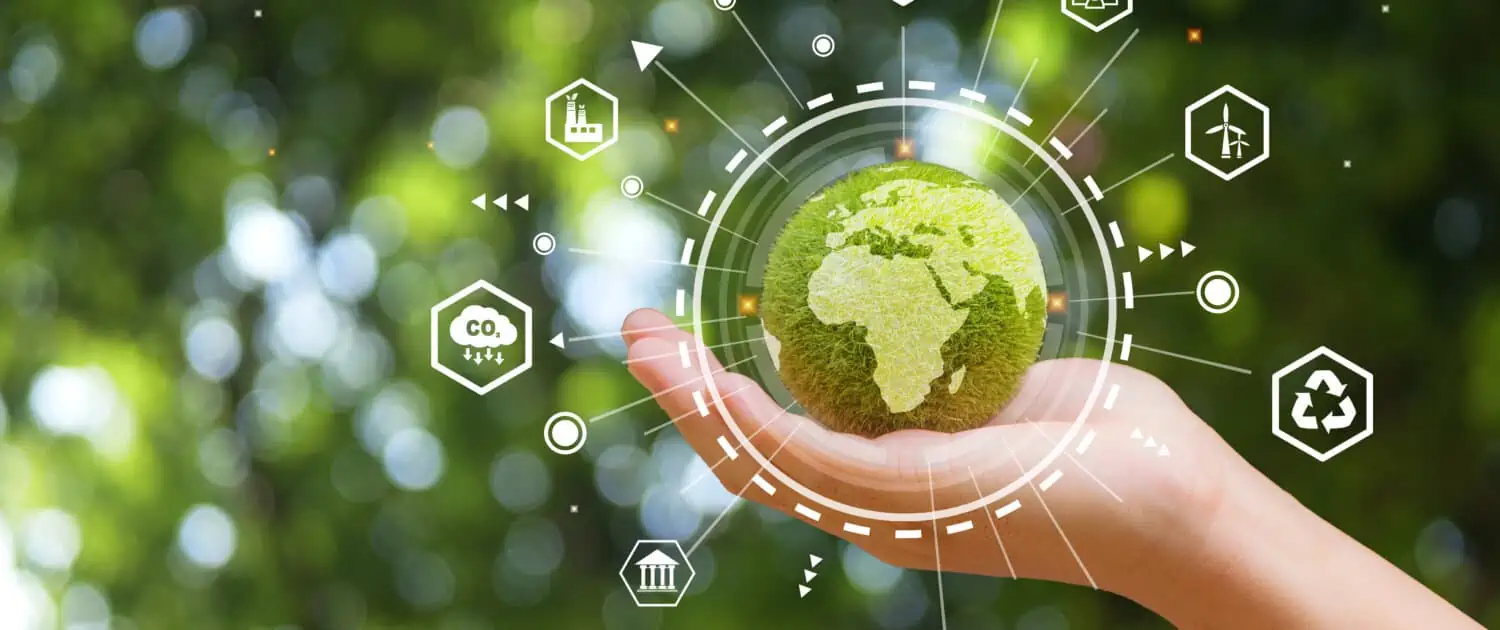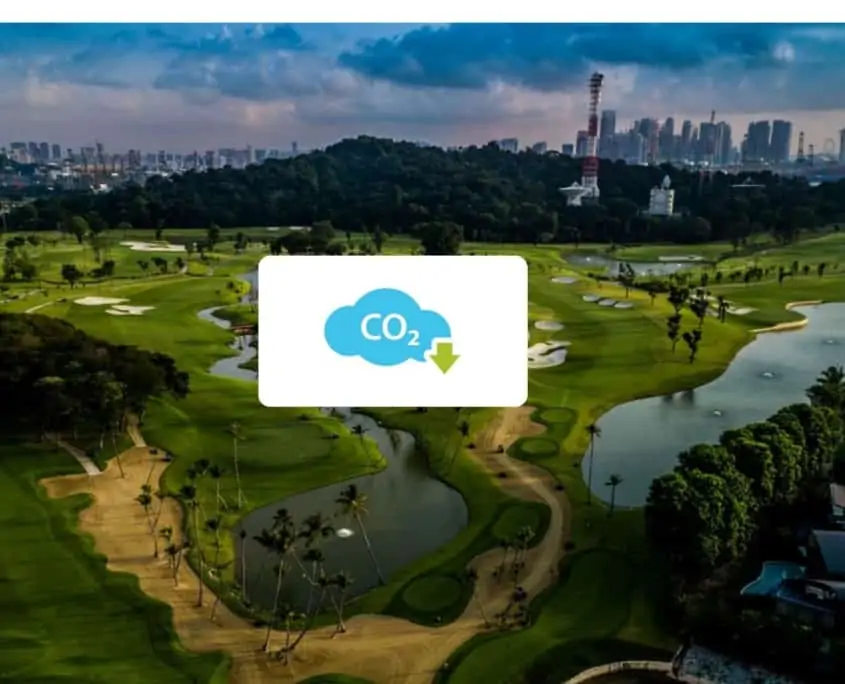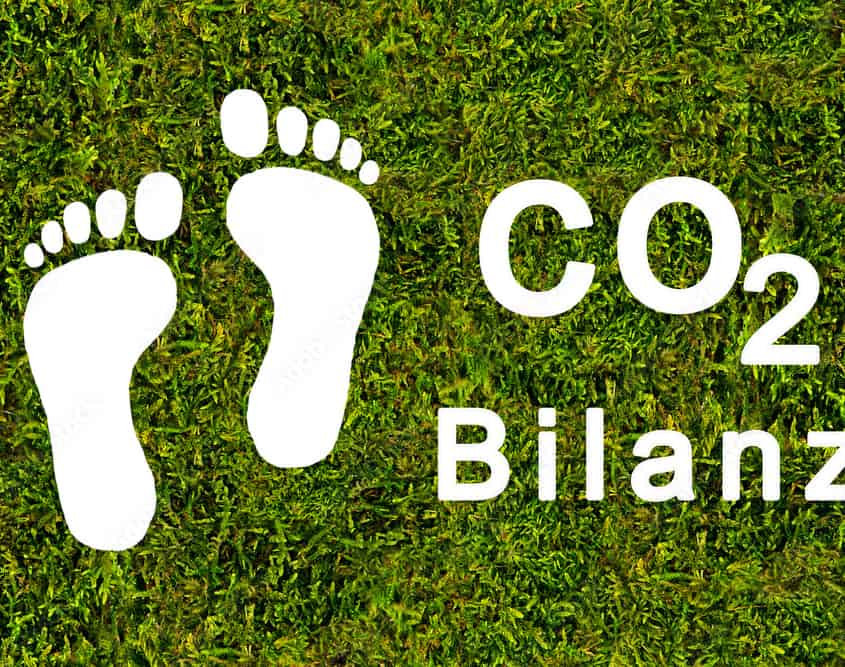The CO2 lexicon: Ten important terms
The CO₂ lexicon provides an overview of the ten most important CO₂ terms that golf course operators and golfers should know. A brief explanation.
Carbon dioxide CO₂
The colorless and odorless gas CO₂ is primarily produced from the combustion of organic materials consisting of carbon (e.g. petroleum, wood, coal). The CO₂ in the air is a so-called greenhouse gas, which in the atmosphere sends the heat radiation absorbed by the earth back to the world and thus warms it.
In the course of photosynthesis, plants use CO₂ to generate energy and convert it into oxygen, thus breaking it down. Oceans, for example, absorb CO₂ and the soil (e.g. permafrost soils) can store the gas. In terms of potential savings, green electricity from wind or solar power is a good choice for electricity generation, a predominantly plant-based diet and the avoidance of mobility options that are harmful to the climate. For the latter in particular, CO₂ calculators can help determine the individual CO₂ footprint.
climate neutrality
Climate neutrality exists when either no greenhouse gases are released into the atmosphere or their emissions are fully compensated for and there is no overall increase in the CO₂ concentration (“net zero emissions”). The EU plans to reduce greenhouse gases by 55 percent by 2030 compared to 1990 levels, and to become climate neutral by 2050. The cornerstones for this project are the European Green Deal adopted by the EU in 2019 and negotiations around a new European climate law.
A 2018 report by the Intergovernmental Panel on Climate Change (IPCC) showed that the targets set so far by the parties to the Paris Agreement are not yet sufficient to meet the 1.5-degree target. To achieve this, CO₂ emissions would have to be reduced by 45 percent by 2030 compared to 2010 levels and reduced to zero by 2050.
UN Climate Ambition Alliance: Race to Zero
Race To Zero is a United Nations (UN) global campaign launched at the 2019 Climate Action Summit to mobilize businesses, cities, regions, and investors for a healthy, resilient, and carbon-free recovery that prevents future threats, creates decent jobs, and enables inclusive, sustainable growth.
Over 11,000 non-state actors have committed to achieving net-zero emissions by 2050 at the latest under the UN Climate Ambition Alliance. The goal is to build momentum for the transition to a carbon-free economy, in which governments must step up their contributions to the Paris Agreement.
Carbon footprint
In addition to its systematic weather records, which have been collected since 1881, the German Weather Service (DWD) also collects a climate balance in the form of analyses of climate development in Germany at regular intervals. The experts of this federal agency recently observed hot spells and intensities, an upward trend in the continuous increase of the annual mean temperature of 1.7 degrees Celsius. According to the annual balance of 2022, the past year, together with 2018, was the sunniest and warmest year in Germany.
Here, a ten-year average is surveyed, which is compared with the decades before. Parameters measured by the DWD include average rainfall, sunshine duration or temperature. Extreme weather is a symptom of climate change, which can manifest itself through more frequent and intense extreme weather events, such as droughts, tornadoes, extreme snowfall, or even severe thunderstorms.
Paris Agreement – Kyoto Protocol
Adopted on December 12, 2015, at the international climate conference in the French capital with the aim of curbing the causes of climate change and in force since 2016, the Paris Agreement requires all countries under international law to define measures at the national level to reduce CO2 emissions. In the document once signed by 196 countries and the European Union, the most important agreement includes limiting global warming to well below two degrees Celsius compared to the pre-industrial era, and if possible even below 1.5 degrees.
Every five years, countries’ voluntary commitments are reviewed and must be replaced by new, more stringent measures. The costs of climate protection are to be borne primarily by the industrialized countries. The signatory states are not obligated under international law to actually achieve these climate protection targets, but they must at least strive to do so with appropriate legislation.
The Paris Climate Agreement is the successor document to the Kyoto Protocol, which was adopted in Japan in 1997 at the third UN climate conference and entered into force in 2005. Compared to the Paris Agreement, the latter did not yet stipulate that all states, i.e. also emerging and developing countries, must draw up national voluntary commitments. Concrete goals and measures, which were not yet defined in the United Nations Framework Convention on Climate Change (UNFCCC) in 1992, are negotiated at the annual climate summits held by the 197 parties to the convention.
Green House Gas Protocol
The Green House Gas ( GHG) Protocol establishes a globally standardized framework for measuring and managing greenhouse gas emissions from private and public operations, value chains, and mitigation activities. It is considered the most widely used standard for greenhouse gas accounting and develops standards, calculation tools, and online training to help countries and cities track progress toward their climate goals.
Through the partnership between the World Resources Institute (WRI) and the World Business Council for Sustainable Development (WBCSD), GHG Protocol leaders are working with governments, industry associations, NGOs, businesses, and other organizations.
CO2 offsetting
Climate offsetting (“CO₂ offsetting”) is intended in principle to compensate for greenhouse gas emissions that occurred previously and may not be avoidable. After measuring a company’s emissions, CO₂ credits can be purchased from operators of climate protection projects as part of offset payments. Such projects are intended to avoid or reduce emissions of climate-relevant gases, as can be the case with reforestation projects or wind power plants, for example.
These credits, which are given in tons for a certain amount of CO₂, can also be purchased from offset traders (e.g. myclimate, atmosfair). These have different certifications (e.g. Verra, Gold Standard). The Federal Environment Agency sets out detailed criteria for assessing the quality of compensation providers and offers. Trading in CO₂ credits takes place both at the state level and privately on so-called voluntary markets.
Scope (1,2,3)
The GHG Protocol’s scope concept, with its three categories, refers to all processes and resources required to complete a project and ensures that two or more companies do not capture emissions in the same scope.
Scope 1 emissions are emissions from sources for which your company is directly responsible or in control (e.g., natural gas, fuels, coolants, emissions from boiler and furnace operation, vehicle fleet). Scope 2 emissions are indirect greenhouse gas emissions from purchased energy, such as electricity, steam, district heating or cooling, that is generated outside your own system boundaries but consumed by your business. Scope 3 includes all indirect emissions that occur along a value chain. Either in the form of upstream emissions associated with purchased goods (tangible goods) and services (intangible goods) or downstream emissions (outside the company).
Double-Counting
Within the United Nations Framework Convention on Climate Change (UNFCCC), the key question of how to prevent double-counting of emission reductions has emerged repeatedly. As part of the 26th World Climate Conference to be held in Glasgow in 2021, a central oversight body has been established to both control this gray area and centrally register the data.
Corresponding adjustments
CO2 certificates can be transferred on international markets. In order for this to function smoothly globally, Article 6 was adopted at the 2021 conference in Glasgow, which regulates cooperation between states or the partners in the voluntary markets.
To prevent double counting, countries or organizations make agreements among themselves (“corresponding adjustments”). This ensures that the CO₂ reduction is deducted from the national greenhouse gas inventory, in which the climate protection project takes place. A host country can choose whether or not to claim the emission reductions. The latter is referred to as the Corresponding Adjustment (CA), which then also appears on the CO₂ certificate.









